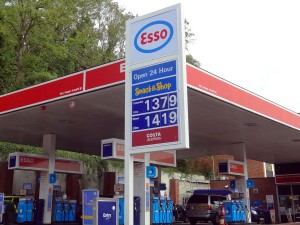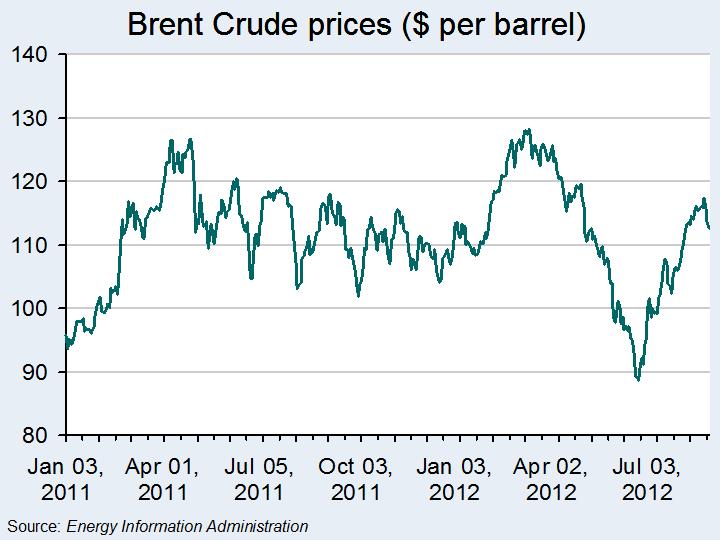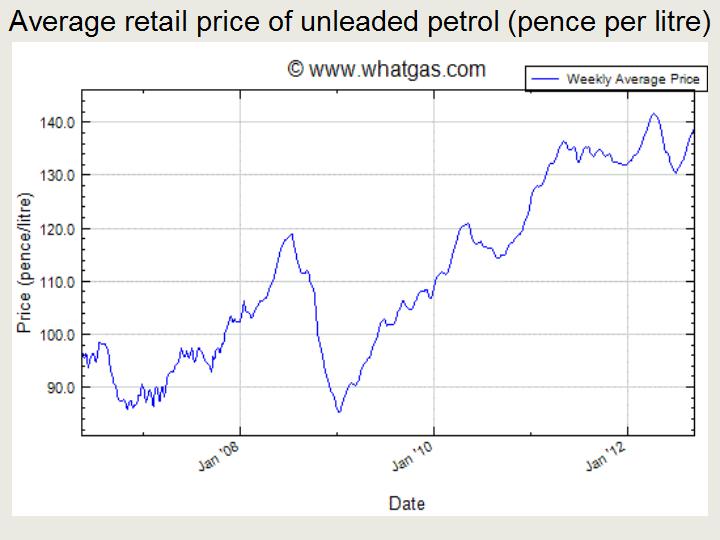 The Competition Commission (CC) recently completed their provisional investigation into the cement and concrete market in Great Britain (press release). They concluded that coordination between the main cement producers is resulting in high prices.
The Competition Commission (CC) recently completed their provisional investigation into the cement and concrete market in Great Britain (press release). They concluded that coordination between the main cement producers is resulting in high prices.
In contrast, to illegal cartels (see for example the recent post on this site), the firms in this market are not accused of doing anything illegal. Instead, the CC’s concern is with tacit collusion. Here, no illegal communication between firms takes place, firms simply do not compete intensely due to a mutual understanding that high prices are collectively beneficial.
Economic theory suggests that one key factor that facilitates tacit coordination is a low number of firms in the market. The UK cement market certainly meets this criteria as it is an oligopoly with just three main players plus a new entrant. The CC concluded that:
In a highly concentrated market where the product doesn’t vary, the established producers know too much about each other’s businesses and have concentrated on retaining their respective market shares rather than competing to the full.
They estimate that this cost consumers over £180m in a 3 year period.
Whilst tacit collusion is not illegal, competition authorities can try to prevent it from arising by intervening in mergers that they believe will make it more likely. In fact, the new entrant to the cement market came about due to sales required by the CC before they would allow a joint-venture between two of the main players to go ahead. Clearly the CC’s recent findings suggest that this intervention was not sufficient to ensure intense competition in the market. However, an additional tool available to the authorities in the UK is to be able to remedy harm to competition undercovered as a result of an investigation into the market. In some cases this may even involve breaking-up firms in the market (see for example the decision to force BAA to sell several airports).
 When deciding on how to remedy the problem in the cement market, the CC will be keen to avoid the past mistakes of their Danish counterparts. In a famous case, in 1993 the Danish authorities attempted to increase competition in the concrete market by publishing individual sellers’ prices. The idea was that this would stimulate competition by encouraging buyers to shop around. However, evidence published here suggests that this in fact increased prices by around 15%! Why? The paper examines possible explanations and concludes that the information published by the competition authorities helped firms to monitor each others behaviour and therefore facilitated tacit coordination in the market. This is entirely consistent with economic theory which shows that another key factor which facilitates tacit coordination is market transparency.
When deciding on how to remedy the problem in the cement market, the CC will be keen to avoid the past mistakes of their Danish counterparts. In a famous case, in 1993 the Danish authorities attempted to increase competition in the concrete market by publishing individual sellers’ prices. The idea was that this would stimulate competition by encouraging buyers to shop around. However, evidence published here suggests that this in fact increased prices by around 15%! Why? The paper examines possible explanations and concludes that the information published by the competition authorities helped firms to monitor each others behaviour and therefore facilitated tacit coordination in the market. This is entirely consistent with economic theory which shows that another key factor which facilitates tacit coordination is market transparency.
The CC suggest that such monitoring is also possible in the GB market:
Established information channels such as price announcement letters can signal their plans, and tit-for-tat behaviour and cross-sales can be used to prevent or retaliate against any moves to disturb the overall balance between the different players in this market.
According to the above press release, the remedies the CC are considering include: the sale of capacity or plants by the leading players in the market, creation of buying groups, prohibition on price announcements and restrictions on the publication of industry level data. This suggests that the CC are well aware that reducing market transparency can play a key role in preventing coordination. It will be fascinating to, first, see what the CC opt for, then, what impact this has on competition in the industry.
Articles
Same product, same price? Competition in the UK Global Cement (22/05/13)
Competition Commission uncovers `serious problems’ in cement market Graham Huband, The Courier (22/05/13)
Competition Commission call for cement sell-off Mark Leftley, London Evening Standard (21/05/13)
Competition Commission documents
CC looks to break open cement market Competition Commission Press Release (21/5/13)
Aggregates, cement and ready-mix concrete market investigation Competition Commission core documents (various dates)
Questions
- Explain tacit collusion using a Prisoner’s dilemma game.
- Is cement the type of product where we might expect coordination to be most likely?
- Why is cement an important market in the UK economy?
- The first article above suggests that most of the management team at the new entrant came from the other main players in the market. Do you think this may significantly affect the likelihood of tacit collusion?
- Evaluate the pros and cons of the alternative remedies the CC are considering.
 The Big Four are well known: Deloitte, Ernst and Young, KPMG and PWC. They act as auditors for 90% of the UK’s stock-market listed companies. They have a very close relationship with the companies that they audit and because of this have faced criticism of not warning of the financial crisis. A further accusation is that the relationship between auditors and managers has become blurred.
The Big Four are well known: Deloitte, Ernst and Young, KPMG and PWC. They act as auditors for 90% of the UK’s stock-market listed companies. They have a very close relationship with the companies that they audit and because of this have faced criticism of not warning of the financial crisis. A further accusation is that the relationship between auditors and managers has become blurred.
In some sense, there is a problem of divorce of ownership from control. The companies that are audited by the Big Four have shareholders who are interested in profits and their dividends. But they employ managers who are responsible for the day-to-day running of the business. However, there are concerns that the auditors have become more concerned with meeting the interests of the managers and not of the shareholders. It has been suggested that the company’s management tend to ‘present their accounts in the most favourable light, whereas shareholder interests can be quite different.’ Laura Carstensen, the chair of the Audit Investigation Group said:
It is clear that there is significant dissatisfaction amongst some institutional investors with the relevance and extent of reporting in audited financial reports … management may have incentives to present their accounts in the most favourable light, whereas shareholder interests can be quite different.
 The Big Four have been criticised for limiting competition in the industry. The Competition Commission has said that companies typically stay with the same auditing firm and this acts to limit competition. One suggestion to encourage competition is to enforce rotation of Auditors. However, the Big Four have said that the market remains competitive, ‘healthy and robust’ and that any enforcement as noted above would not be in the public interest. Other, smaller auditing companies have praised the preliminary report of the Competition Commission. One firm said:
The Big Four have been criticised for limiting competition in the industry. The Competition Commission has said that companies typically stay with the same auditing firm and this acts to limit competition. One suggestion to encourage competition is to enforce rotation of Auditors. However, the Big Four have said that the market remains competitive, ‘healthy and robust’ and that any enforcement as noted above would not be in the public interest. Other, smaller auditing companies have praised the preliminary report of the Competition Commission. One firm said:
No one solution will achieve market correction, but rather a combination of tendering requirements, encouragement of transparency and dialogue between auditors, companies and investors, and reform of outdated exclusionary practices should provide a backdrop for a healthier FTSE 350 audit market.
The report is not yet final, but the future of the Big Four is somewhat uncertain, especially with the European Commission’s desire to break them up. The following articles look at this industry.
Big Four accountants reject claims over high prices and poor competition The Guardian, Josephine Moulds and David Feeney (22/2/13)
Competition Commission raps Big Four accountants BBC News (22/2/13)
Big Four’s rivals welcome audit shake-up Financial Times, Adam Jones (22/2/13)
UK’s “Big Four” accountants under fire from watchdog Reuters, Huw Jones (22/2/13)
Big Four chastised by Competition Commission The Telegraph, Helia Ebrahimi (22/2/13)
The uncompetitive culture of auditing’s big four remains undented The Guardian, Prem Sikka (23/2/13)
Big Four accountants ‘in closed club on audits’ Independent, Mark Leftly (23/2/13)
Questions
- What is the role of the Competition Commission?
- Explain with other examples the problem of the divorce of ownership from control. How might the interest of shareholders and managers differ? Can they ever be aligned?
- Is market share a good measure of the competitiveness of an industry?
- What are the benefits of competition?
- Why has the regulator suggested that the Big Four are limiting competition?
- What solutions have been proposed by the Competition Commission? Explain how they are likely to stimulate competition in this market.
 Over the past five years the Office of Fair Trading (OFT) has been closely studying the market for personal bank accounts in the UK. Last week, it announced its latest findings and the evidence seems to suggest that there remains a lack of competition in the market.
Over the past five years the Office of Fair Trading (OFT) has been closely studying the market for personal bank accounts in the UK. Last week, it announced its latest findings and the evidence seems to suggest that there remains a lack of competition in the market.
On the positive side, it reports that there has been a large fall in unarranged overdraft fees. However, despite this, according to the OFT banks still make on average £139 per year from every active current account. Furthermore, concentration has increased with the four largest banks (Barclays, Lloyds, HSBC and RBS) now accounting for 85% of the market and there has been little new entry. It appears that one of the key factors in enabling these main players to dominate the market and reap high profits is a lack of consumer switching behaviour. According to the OFT chief executive, Clive Maxwell:
Customers still find it difficult to assess which account offers the best deal and lack confidence that they can switch accounts easily. This prevents them from driving effective competition between providers.
Despite all these concerns, the OFT declined to refer the market to the Competition Commission for a more in-depth investigation and potential remedial action. Instead, the OFT will look at the market again in 2015. Richard Lloyd, the executive director at the consumer organisation Which?, was disappointed with this decision and was quoted in the The Guardian as saying:
Everyone – consumers, the government, leading bankers and now the OFT – seems to agree that big change is needed in banking, and that much greater competition on the high street is urgently needed to make the banks work for customers, not bankers.
Whilst at least for the moment, the Competition Commission will not get the chance to take action, there are still several reforms underway that may affect competition in the market. First, the OFT is increasing pressure on banks to allow consumers to have portable account numbers that they can take with them if they switch provider. Second, as a result of the Independent Commission’s review, banks will be required to switch a customer’s account in one week, rather than the average of 18 days it currently takes, and this process will become much more seamless. Finally, Lloyds has agreed to sell over 600 branches to the Co-op in order to meet the European Commission’s requirements following the government bail-out of the bank in 2008. This will increase the Co-op’s share of the current account market to 7%. It will be interesting to see how these reforms affect the market. If there is not substantial evidence of increased competition then the market is likely to face more scrutiny from the competition authorities.
Bank accounts: OFT says significant change needed BBC (25/01/13)
OFT: banks failing consumers The Economic Voice (25/01/13)
Let’s make bank accounts as easy to switch as mobiles The Telegraph, Andrew Oxlade (28/01/13)
OFT chief calls for more competitive banking sector The Telegraph, Denise Roland (30/01/13)
Questions
- What type of market structure best fits the banking industry?
- What are the barriers to entry in this market?
- What are the key features of the market that reduce consumer switching behaviour?
- Do you think most people are more likely to switch their mobile phone or current account provider? Explain.
- Why does limited consumer switching reduce the intensity of competition?
- Do you think the current reforms will result in a substantial increase in competition?
 Everyone who drives in the UK is required to take out car insurance. Whilst fully comprehensive is voluntary, it is compulsory to have at least third party insurance, which covers damage to other vehicles. Insurance premiums are calculated based on a number of different variables, such that two people driving the same car may face wildly different costs.
Everyone who drives in the UK is required to take out car insurance. Whilst fully comprehensive is voluntary, it is compulsory to have at least third party insurance, which covers damage to other vehicles. Insurance premiums are calculated based on a number of different variables, such that two people driving the same car may face wildly different costs.
Although there are many insurance companies to choose from, this industry has been referred to the Competition Commission by the OFT as it was ‘worried the structure of the market was making costs and premiums unnecessarily high.’
According to Moneysupermarket, the average cost of car insurance reached a high of £554 in April 2011, but have fallen by £76 since. With tight incomes across the UK for many families, high car insurance premiums is another strain and thus this investigation will come at an apt time, even though the findings of the CC may not be reported for 2 years. The Association of British Insurers (ABI) said that the investigation would:
‘bring much-needed reforms to the market that will, in turn, result in lower car insurance premiums for consumers’.
 The problem seems to be that when an individual is involved in an accident and sends their car off for repairs, their insurance company doesn’t have much control over the bills they end up paying, which can be inflated by £155 each time. This therefore leads into higher costs for the insurance company, which are then passed on the driver in the form of an increased premium. Other concerns were that courtesy cars were being offered, at an estimated cost of £560 per vehicle (according to the OFT) and that drivers were using these cars for longer than necessary, once again causing costs to rise.
The problem seems to be that when an individual is involved in an accident and sends their car off for repairs, their insurance company doesn’t have much control over the bills they end up paying, which can be inflated by £155 each time. This therefore leads into higher costs for the insurance company, which are then passed on the driver in the form of an increased premium. Other concerns were that courtesy cars were being offered, at an estimated cost of £560 per vehicle (according to the OFT) and that drivers were using these cars for longer than necessary, once again causing costs to rise.
Altogether, it has been suggested that the actions of the insurance company of ‘not-at-fault’ drivers, car hire companies, repairers and brokers push up the prices for ‘at-fault’ drivers’ insurance companies. Given that any insurance company is just as likely to be the ‘at-fault’ insurance company, they all face rising costs.
 Back in May, the OFT had already decided that the car insurance market required a more detailed investigation, because of the ‘dysfunctionality’ of the market. Following a public consultation, the industry will now face an investigation by the CC. One additional area that may be of interest to the CC came to light last year, where it was found that insurance companies were claiming against themselves in a bid to drive up premiums. Although the investigation will take some time, it is still a timely review for many drivers, who have seen the cost of motoring reach record highs. The following articles consider the market for car insurance.
Back in May, the OFT had already decided that the car insurance market required a more detailed investigation, because of the ‘dysfunctionality’ of the market. Following a public consultation, the industry will now face an investigation by the CC. One additional area that may be of interest to the CC came to light last year, where it was found that insurance companies were claiming against themselves in a bid to drive up premiums. Although the investigation will take some time, it is still a timely review for many drivers, who have seen the cost of motoring reach record highs. The following articles consider the market for car insurance.
Articles
Car insurance market referred to Competition Commission BBC News (28/9/12)
No quick fix for motor insurance abuses, says watchdog Independent, Simon Read (29/9/12)
Car insurance industry faces probe The Press Association (28/9/12)
Competition Commission referral will take time to lower motor insurance premiums The Telegraph, Rosie Murray-West (28/9/12)
UK car insurance probe over-shadows Direct Line IPO Reuters, Matt Scuffham and Myles Neligan (28/9/12)
 Car insurance scrutinized over high premiums Sky News (28/9/12)
Car insurance scrutinized over high premiums Sky News (28/9/12)
Rip-off motor insurance firms face competition watchdogs probe over £225million racket Mail Online, Ray Massey (28/9/12)
Questions
- Why are car insurance firms willing to take on other people’s risks?
- What conditions must exist in a market for private companies to provide acr insurance (or insurance of any kind)?
- Why is third-party insurance compulsory, whereas people can opt for fully comprehensive insurance?
- What powers does (a) the OFT and (b) the Competition Commission have? Is it likely that this report will have any impact on car insurance premiums?
- What allegations have been made that help to explain why insurance premiums I this industry have increased?
- Is there an argument for allowing the industry itself to provide its own regulation?
- In which market structure would you place the car insurance industry?
 When crude oil prices go up, the prices of petrol and diesel go up pretty well straight away and by the full amount, or more, of the crude price rise. When crude prices go down, however, road fuel prices are often slow to fall; and when they do, the fall is less than the full fall in crude prices.
When crude oil prices go up, the prices of petrol and diesel go up pretty well straight away and by the full amount, or more, of the crude price rise. When crude prices go down, however, road fuel prices are often slow to fall; and when they do, the fall is less than the full fall in crude prices.
Click on charts below for a larger version. Click here for a PowerPoint of the left-hand chart.
In response to complaints of motorists and haulage companies, the Office of Fair Trading has announced that it will investigate the link between crude prices and prices at the pump. It will report in January 2013.


The review will consider questions of competition and market power. In particular, it will look at the power of the oil companies in determining the wholesale price of road fuel.
It will also examine the retail fuel sector and whether supermarkets are driving out independent retailers. The claim of many independent petrol stations is that supermarkets are selling below cost as a lost leader to encourage people to shop in their stores. They also claim that supermarkets use their buying power to obtain fuel more cheaply.
What is more, most of the petrol stations that are not part of supermarkets are owned by the oil companies. Again, independents claim that oil companies supply fuel more cheaply to their own stations than to independents.
As a result of what many independents see as unfair competition, many are driven out of business. Today there some 9000 petrol stations in the UK; 20 years ago there were twice as many.
The following articles look at the remit of the OFT investigation and at the competition issues in the road fuel market.
Articles
 Formal inquiry tries to ease motorist pain at the pumps ITV News, Laura Kuenssberg (5/9/12)
Formal inquiry tries to ease motorist pain at the pumps ITV News, Laura Kuenssberg (5/9/12)
OFT to scrutinise retail petrol market Financial Times, Caroline Binham (5/9/12)
OFT launches probe into pump prices Channel 4 News (5/9/12)
Petrol and diesel prices: Office of Fair Trading launches competition inquiry Guardian, Terry Macalister (5/9/12)
Petrol and diesel price review is launched by OFT BBC News (5/9/12)
Are supermarkets to blame for the devastation of independent petrol retailers by deliberately selling at a loss? This is Money, Tom Mcghie and Neil Craven (8/9/12)
OFT petrol pricing probe welcomed The Grocer, Beth Phillips (7/9/12)
Private businesses welcome OFT’s fuel price investigation Talking Retail (6/9/12)
10 charges that make consumers scratch their heads BBC News Magazine, Lucy Townsend (6/9/12)
Data
Crude Oil Price Index Index Mundi
Daily Brent Crude Spot Price, 1987 to present day US Energy Information Administration
Current UK Petrol Pump Prices What Pric£?
Fuel Prices WhatGas.com
Questions
- Describe the structure of the road fuel market, from oil production through to the retailing of petrol and diesel.
- What is meant by the terms ‘monosony’ and ‘oligopsony’? Which companies in the road fuel market have significant monopsony/oligopsony power?
- What determines the price elasticity of demand for road fuel in (a) the short run; (b) the long run? What implications does this have for the value of the short-run and long-run price elasticities?
- Where is the abuse of market power likely to occour in the road fuel market?
- To what extent is it in the consumers’ interests for supermarkets to sell road fuel below average cost?
- Examine the data for pump prices and crude oil prices and establish whether there is any truth in the claim that pump prices adjust rapidly to a rise in crude prices and slowly to a fall in crude prices.
 The Competition Commission (CC) recently completed their provisional investigation into the cement and concrete market in Great Britain (press release). They concluded that coordination between the main cement producers is resulting in high prices.
The Competition Commission (CC) recently completed their provisional investigation into the cement and concrete market in Great Britain (press release). They concluded that coordination between the main cement producers is resulting in high prices. When deciding on how to remedy the problem in the cement market, the CC will be keen to avoid the past mistakes of their Danish counterparts. In a famous case, in 1993 the Danish authorities attempted to increase competition in the concrete market by publishing individual sellers’ prices. The idea was that this would stimulate competition by encouraging buyers to shop around. However, evidence published here suggests that this in fact increased prices by around 15%! Why? The paper examines possible explanations and concludes that the information published by the competition authorities helped firms to monitor each others behaviour and therefore facilitated tacit coordination in the market. This is entirely consistent with economic theory which shows that another key factor which facilitates tacit coordination is market transparency.
When deciding on how to remedy the problem in the cement market, the CC will be keen to avoid the past mistakes of their Danish counterparts. In a famous case, in 1993 the Danish authorities attempted to increase competition in the concrete market by publishing individual sellers’ prices. The idea was that this would stimulate competition by encouraging buyers to shop around. However, evidence published here suggests that this in fact increased prices by around 15%! Why? The paper examines possible explanations and concludes that the information published by the competition authorities helped firms to monitor each others behaviour and therefore facilitated tacit coordination in the market. This is entirely consistent with economic theory which shows that another key factor which facilitates tacit coordination is market transparency.








